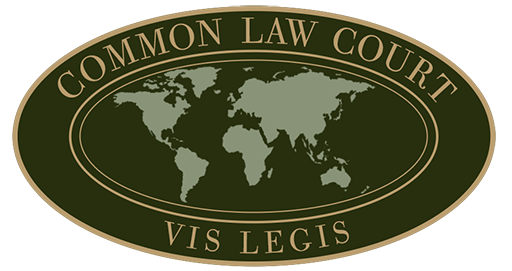
ICAO
Doc 9303
Machine Readable Travel Documents Eighth Edition, 2021
Machine Readable Zone
Doc 9303
Machine Readable Travel Documents Eighth Edition, 2021
Part 4: Specifications for Machine Readable Passports (MRPs)
3. GENERAL LAYOUT OF THE MRP DATA PAGE
The MRP data page follows a standardized layout to facilitate reading of data globally by visual and machine readable means.
Mandatory Fields
1 – The name of the State or organization responsible for issuing the MRP.
2 – The word for “passport” in the language of the issuing State or organization, plus either PASSPORT (English), PASSEPORT (French) or PASAPORTE (Spanish) if the language of the issuing State or organization is not English, French or Spanish.
3 – Capital letter P to designate an MRP. One additional capital letter may be used, in the character position after the letter P and at the discretion of the issuing State or organization, to designate other types of passports such as MRP issued to diplomatic staff, an MRP issued for travel on government business, or a passport issued for a special purpose.
4 – Issuing State or organization (in abbreviated code).
5 – Passport Number. As given by the issuing State or organization to uniquely identify the document from all other MRTDs issued by the State or organization.
6 – Name of the holder, as identified by the issuing State or organization.
7 – Secondary component(s) of the name of the holder.
8 – Nationality – Code: XXX – Person of unspecified nationality, for whom issuing State does not consider it necessary to specify any of the codes.
9 – Date of birth – Holder’s date of birth as recorded by the issuing State or organization.
11 – Sex of the holder, to be specified by use of the single initial commonly used in the language of the State or organization where the document is issued.
14 – Date of issue.
15 – Authority or issuing organization for the MRP. This field shall be used to indicate the issuing authority or issuing organization.
16 – Date of expiry.
18 – Holder’s signature or usual mark. At the discretion of the issuing State or organization.
19 – This field shall contain a portrait of the holder. The portrait shall not be larger than 45.0 mm x 35.0 mm (1.77 in x 1.38 in) nor smaller than 32.0 mm x 26.0 mm.
PHYSICAL CHARACTERISTICS OF MRTDS
Issuing States and organizations may choose the materials to be used in the production of their travel documents.
VISUAL INSPECTION ZONE (VIZ)
The Visual Inspection Zone of an MRTD comprises the mandatory and optional data elements designed for visual inspection.
3.9.1 Displayed facial image.
The displayed facial image, whether provided in paper or digital formal, shall:
- be digitally printed in the MRTD;
- depict a true likeness of the rightful holder of the MRTD; and
- not be digitally altered or enhanced to change the subject’s appearance in any way.
Notice Of Right To Travel And Identity Documentation
(Affirmation by CLC Diplomats of Freedom of Movement and Lawful Identification)
This document affirms that a passport is a form of identification used to verify the identity of an individual when travelling between nations. It does not create the right to travel; rather, it is an administrative instrument to confirm one’s identity and place of origin. The right to travel is inherent to every man and woman, recognised and protected under international law and fundamental human rights instruments.
1. Definition of a Passport
A passport is an identity document issued by a recognised authority, community, or organisation for the purpose of identifying an individual who is travelling between jurisdictions.
Its core functions are:
- To certify the bearer’s name, place of origin, and nationality or affiliation.
- To confirm that the bearer is under the protection or recognition of the issuing body.
- To facilitate passage across borders in accordance with recognised international standards.
Historically, passports were issued not only by national governments but also by regional authorities, religious orders, and other legitimate communities or associations to identify their members. No statute or treaty limits issuance strictly to centralised state governments.
2. The Inherent Right to Travel
The right to travel is an unalienable liberty belonging to all men and women by virtue of their birth. It is recognised as a natural right and further protected in the following legal instruments:
A. Universal Declaration of Human Rights (UDHR, 1948)
- Article 13(1): “Everyone has the right to freedom of movement and residence within the borders of each state.”
- Article 13(2): “Everyone has the right to leave any country, including his own, and to return to his country.”
These provisions confirm that governments may not unreasonably restrict movement, nor deny a person the right to depart or re-enter their place of origin.
B. International Covenant on Civil and Political Rights (ICCPR, 1966)
- Article 12(1): “Everyone lawfully within the territory of a State shall, within that territory, have the right to liberty of movement and freedom to choose his residence.”
- Article 12(2): “Everyone shall be free to leave any country, including his own.”
- Article 12(4): “No one shall be arbitrarily deprived of the right to enter his own country.”
The ICCPR, ratified by the United Kingdom in 1976, makes these rights binding under international law.
C. European Convention on Human Rights (ECHR, 1950)
- Protocol No. 4, Article 2(1): “Everyone lawfully within the territory of a State shall, within that territory, have the right to liberty of movement and freedom to choose his residence.”
- Article 2(2): “Everyone shall be free to leave any country, including his own.”
These instruments collectively guarantee the lawful right of men and women to move freely, domestically and internationally.
3. Prohibition of Unlawful Restriction
Any attempt by a public authority or government to:
- Deny free movement without lawful cause,
- Impose administrative barriers without due process, or
- Prevent travel except in accordance with law and necessity,
is a breach of international human rights obligations and may amount to arbitrary restriction of liberty under both domestic and international law.
Governments are administrative entities created to serve the people; they cannot revoke rights that pre-exist their formation.
4. Recognition of Lawful Identity Documents
Passports or identification documents issued by communities, associations, or recognised organisations for the purpose of identifying individuals are lawful in principle, provided they:
- Accurately reflect the identity of the bearer;
- Are issued with the consent of the bearer;
- Do not purport to commit fraud or impersonation; and
- Serve the purpose of confirming identity in lawful travel.
The lawful standing of such documents stems from freedom of association (Article 20 UDHR) and self-determination (Article 1 ICCPR).
5. Summary of Lawful Position
- The right to travel is a natural and protected human right.
- Governments have no lawful authority to suspend this right except under due process and in accordance with law.
- Passports serve as proof of identity, not as a permission to exist or move.
- Lawful communities or organisations may issue identification documents consistent with these principles.
- Men and women are free to travel peacefully, provided no harm or fraud is committed against others.
Issued as a lawful statement of fact and affirmation of natural and international rights.

